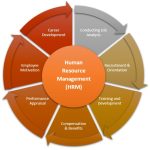Due to increasing size of market, it is quite obvious that manufacturers or whole sellers cannot approach directly to every customer around the state or nation. To overcome this limitation, manufacturers normally appoint reliable agents at every desired location to reach the customers directly. He makes an agreement with local traders who can sell goods on his behalf on commission basis.
Meaning and Features of Consignment
Consignment is a process under which the owner consigns/handovers his materials to his agent/salesman for the purpose of shipping, transfer, sale etc.
Following are the points that throw more light on the nature and scope of a consignment −
· Here, ultimate ownership of the goods remains with the manufacturer or whole seller who handovers goods to his agent for sale on commission basis. Consignment is merely a transfer of possession of goods not an ownership.
· Since ownership of goods remain with the manufacturer (consignor), consignee (agent) is not responsible for any loss or destruction of goods.
· The goods are sold on owner’s risk and hence, profit/loss goes to owner.
· Consignee only gets re-imbursement of expenses incurred by him and commission on sale made by him, because sale that proceeds, belongs to owner (consignor).
Why is Consignment not a Sale?
Following are the reasons that explain why consignment is not a sale −
· Ownership − Ownership of goods need to be transferred from seller to buyer in case of sale, but ownership of goods remains with the consignor, till the goods are sold by the consignee.
· Risk − In case of a consignment, normally, risk remains with the consignor in the event of goods being lost or destroyed.
· Relationship − The relation between a seller and a buyer will be of debtor and creditor in case where goods are sold on credit basis. On the other hand, the relationship between a consignor and a consignee is that of principal and agent.
· Goods Return − Usually, the sold goods cannot be returned back; however, if there is any manufacturing defect or any other technical fault, seller is obliged to take them back. On the other hand, consignee may return the unsold stock of goods to consignor anytime.
Important Terms
Pro-forma Invoice
Invoice implies that the sale has taken place, but pro-forma invoice is not an invoice. Proforma invoice is a statement prepared by the consignor of goods showing quantity, quality, and price of the goods. Such pro-forma invoice is issued by the consignor to consignee regarding the goods before the sale actually takes place.
Account Sale
Statement showing the details of goods received, goods sold, expenses incurred, commission charged, remittances made, and due balance is called Account Sale and it is remitted by the consignee to the consignor of goods on a periodic basis.
Commission
There are three types of commission payable to consignee on sale of the goods −
· Simple Commission − This is usually a fixed percentage on the total sale, calculated as per mutually agreed terms.
· Over-riding Commission − In case of an extra-ordinary sale of the goods, some specific amount is payable to consignee in the form of an incentive is called overriding commission. Over-riding commission is also calculated on the total sales.
· Del-credere Commission − “An agreement by which an agent or factor, in consideration of an additional premium or commission (called a del credere commission), engages, when he sells goods on credit, to insure, warrant, or guarantee to his principal the solvency of the purchaser, the engagement of the factor being to pay the debt himself if it is not punctually discharged by the buyer when it becomes due.”
C. & G. Merriam Co.
A del credere commission is paid by the consignor to his agent for taking additional risk of recovery of debts from the consignee on an account of credit sales made by him (agent) on consignor’s behalf.
Direct Expenses
Expenses, which increases the cost of the goods and are of non-recurring nature and incurred till the goods reach the warehouse of consignee may called direct expenses.
Indirect Expenses
Warehouse rent, storage charges, advertisement expenses, salaries, etc. comes under the category of the indirect expenses. The distinctions between direct and indirect expenses are important especially at the time of valuation of the unsold closing stock.
Advance
Amount paid in advance by a consignee to consigner as security called as advance.
Valuation of unsold Consignment
Valuation of unsold stock will be done like a closing stock of a Trading concern and should be valued at the cost or the market price whichever is low. This stock will be valued at −
- Proportionate cost price and
- Proportionate direct expenses.
Here, proportionate direct expenses mean — all expenses incurred by the consignor and the expenses of consignee, which are incurred by him till the goods reach the warehouse.
Invoicing Goods higher than Cost
Under this method, goods are charged at the cost + profit and the pro-forma invoice also shows this higher price of such goods. To know the actual profit, at the end of an accounting period, consignment account will be credited with excess price so charged. Value of the stock will also be adjusted to the extent of profit element. Main reason to adopt this policy by consignor is −
· To hide actual profit from consignee.
· Valuation of a stock at the consignor’s warehouse is comparatively easy in this case.
· In this case, consignor usually directs consignee to sale goods on invoice price only. It prevents different sale price to different customers.
Loss of Goods
There may be two types of losses as explained below −
Normal Loss − Normal loss may occur due to inherent characteristics of goods like evaporation, drying up of goods, etc. It is not separately shown in the consignment account, but included in the cost of goods sold and the closing stock by inflating the rate per unit. To calculate the value of unsold stock, following formula is used.
Valueofclosingstock=TotalvalueofgoodssentNetquantityreceivedbyconsignee×UnsoldquantityValueofclosingstock=TotalvalueofgoodssentNetquantityreceivedbyconsignee×Unsoldquantity
Netquantityreceived=Goodsconsignedquantity−NormallossquantityNetquantityreceived=Goodsconsignedquantity−Normallossquantity
Abnormal Loss − An abnormal loss may occur due to any accidental reason. It is credited to the consignment account to calculate actual profitability. Valuation of closing stock is done on the same basis as explained earlier i.e. proportionate cost + proportionate direct expenses.
Abnormal Loss and Insurance
If, there is an insurance policy in respect of the consigned goods; following entries will be passed in the books of a consignor −
| Sr.No. | In the Books of Consignor | In the Books of Consignee |
| 1 | Payment of Insurance Premium(a) If insurance premium is paid by the consignor, then cash will be credited.(b) If Insurance premium is paid by the consignee, then consignee’s A/c will be credited. | Consignment A/cDrTo Cash A/cOrTo Consignee A/c(Being Insurance premium paid) |
| 2 | At the time of Abnormal Loss | Abnormal Loss A/cDrTo Consignment A/c(Being Loss Incurred) |
| 3 | Acceptance of Claim by Insurance Company | Insurance Company (Name of the insurer) A/cDrTo Abnormal Loss A/c(Being claim admitted) |
| 4 | On receipt of Claim | Bank A/cDrTo Insurance Company A/c(Being amount of claim received) |
| 5 | In Case of Loss | Profit & Loss A/cDrTo Abnormal Loss A/c(Being amount of Abnormal Loss transferred) |
Summary of Accounting Entries
Following Accounting Entries (Except for Loss) will be done in the books of consignor and consignee for transactions related to the consignment −
| Sr.No. | In the Books of Consignor | In the Books of Consignee |
| 1 | When goods are sent to the consigneeConsignment A/cDrTo Goods Sent on Consignment A/c(Being Goods Sent on Consignment) | No need to do any Entry in this case |
| 2 | Expenses Incurred by ConsignorConsignment A/cDrTo Cash/Bank A/c(Being Expenses incurred on consignment) | Not Applicable |
| 3 | Advance given by consigneeCash/Bank A/cDrTo Consignee’s A/c(Being advance received from consignee) | Consigner A/cDrTo Bank/Cash A/c(Being Advance amount paid to Consignor) |
| 4 | Expenses Incurred by ConsigneeConsignment A/cDrTo Consignee’s A/c(Being Expenses incurred by consignee) | Consigner A/cDrTo Bank/Cash A/c(Being Expenses incurred on goods received on consignment) |
| 5 | Sale by ConsigneeConsignee’s A/cDrTo Consignment A/c(Being Expenses incurred by consignee) | Cash (for cash sale) A/cDrDebtors (for Credit Sale) A/c DrTo Consignor A/c(Being goods sold) |
| 6 | Commission to ConsigneeConsignment A/cDrTo Consignee’s A/c(Being Commission on sale due to consignee) | Consigner A/cDrTo Commission A/c(Being Commission earned) |
| 7 | Remittance from ConsigneeCash/Bank A/cDrTo Consignee’s A/c(Being due amount received from consignee) | Consigner A/cDrTo Bank/Cash A/c(Being Balance due Payment made to consignor) |
| 8 | Entry for Profit on ConsignmentProfit & Loss A/cDrTo Consignment A/c(Being Profit earned on consignment) | Not Applicable |
| 9 | Loss on ConsignmentConsignment A/cDrTo Profit & Loss A/c(Being Loss incurred on Consignment transferred to the profit & Loss Account) | Not Applicable |



Comments are closed